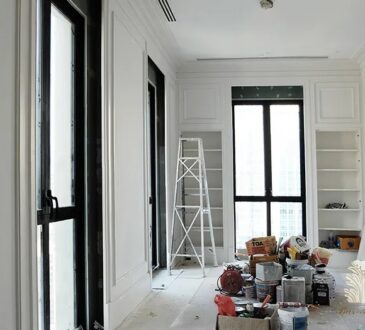
People who live in cities or towns often believe that outdoor air is inherently more polluted than the air in their homes. Unfortunately, according to the Environmental Protection Agency, the air in your home may be as many as 2-5 times more polluted than the air on the street outside!
This problem can be caused by various factors, the most significant of which are the lack of regular airing, the presence of sources of pollution within or near the house, and dirty, low quality, or improperly installed HVAC filters.
In the following article, we’ll take a look at the different types of filters used in HVAC systems and explain how each of them contributes to the indoor air quality of your home. It’s always better to consult HVAC experts directly to learn where you can get first-rate HVAC equipment in more detail. However, for simple use, the most frequently used HVAC filter types are:
Fiberglass air filters
These disposable filters have the distinction of being the most affordable HVAC filters. However, fiberglass filters have the lowest straining ability of all filter types, and as such are more effective at protecting the HVAC system itself than actually keeping dust and pollutants out of the air.
If you’re going to use this kind of air filter, keep in mind that you may still be prone to respiratory issues.
HEPA filters
The US Department of Health recommends High-Efficiency Particulate Air (HEPA) filters due to their ability to remove at least 99.97% of all airborne pollutants and allergens. With a MERV rating of almost 16, they can stop even extremely tiny pollutants (0.3 microns), such as bacteria, tobacco, mold spores, and dust.
Due to how effective they are, these filters are recommended for people who suffer from allergies or other respiratory conditions. Just keep in mind that this sort of filter usually has to be adjusted by a HVAC technician to fit your specific HVAC system.
UV filters
As their name implies, UV filters make use of short-wave ultraviolet light to destroy viruses, bacteria, and fungal spores. They’re also quite durable: on average, you’ll need to replace the UV lamps about once a year.
Unfortunately, despite being extremely good at eradicating pathogens, UV filters aren’t great when it comes to stopping pollutants such as dust. For this reason, they’re typically used in conjunction with other filtration methods (for instance, HEPA filters).
Pleated media filters
This is another type of disposable HVAC filter. These filters are made of cotton folds or polyester fabrics. Due to a design that maximizes surface area, they’re generally quite effective at filtering dust and other types of pollutants.
Regular versions usually have a MERV rating of 5-13, while high efficiency models boast a MERV rating as high as 14-16.
Washable filters
Not only are washable filters environmentally friendly because they can last for decades, they will also save you money in the long run because you won’t have to pay for replacements.
Their drawbacks are that they have a higher upfront cost, and that they need to be properly maintained to be able to perform correctly. Also, since these filters typically have a low MERV rating, they’re not the ideal choice for someone who suffers from allergies or other respiratory conditions.
Electrostatic filters
By using small paper and cotton fibers, electrostatic filters are able to create static that attracts airborne particles such as dust and prevents them from spreading into the other areas of your home. As such, they’re a superb choice for homeowners who need a filter that can keep allergens at a minimum.
Electrostatic filters come in both reusable and disposable variants.
Unsure if you need hvac repair or installation services? Here’s a look at some of the most common reasons why people turn to these professionals.




